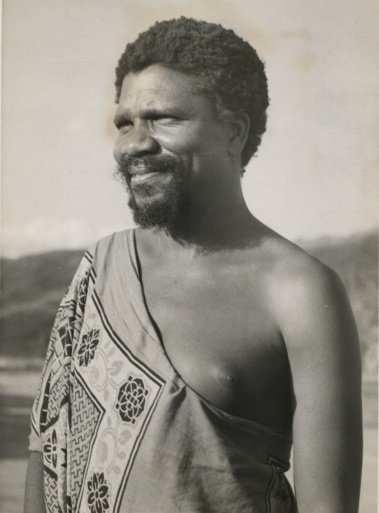by Susan Flantzer © Unofficial Royalty 2020

Credit – Wikipedia
Born on December 27, 1949, in Swaziland, now Eswatini, Queen Mother Ntfombi Tfwala of Eswatini was one of the 70 wives of King Sobhuza II of Swaziland and has been the joint head of state of Swaziland, called Eswatini since 2018, along with her son King Mswati III of Swaziland, from 1986 – present. Ntfombi Tfwala had one child with King Sobhuza II of Swaziland, a son Prince Makhosetive Dlamini, now King Mswati III of Swaziland.
A Swazi king cannot appoint his successor, nor is there a line of succession. A traditional council called the Liqoqo decides which of the wives shall be “Great Wife” and “Indlovukati” (She-Elephant / Queen Mother) after the death of a king. The “Great Wife” must be of good character and cannot be one of the first two wives (known as ritual wives) chosen for the king by the council. The son of this “Great Wife” will automatically become the next king.
Embed from Getty Images
King Sobhuza II of Swaziland in 1976
However, King Sobhuza II did something a bit different. He designated another of his wives, Dzeliwe Shongwe, as the Indlovukati. Instead of recognizing one of Dzeliwe Shongwe’s sons as his heir apparent, he indicated to his council that he wanted Prince Makhosetive Dlamini, Ntfombi Tfwala’s 14-year-old son, to succeed him on the throne.
On August 21, 1982, King Sobhuza II died at the age of 83, having reigned for 82 years. Dzeliwe Shongwe was named by the council as the Queen Regent until Prince Makhosetive Dlamini, designated by King Sobhuza II as his successor, reached the age of eighteen. However, soon there were disagreements between members of the council and Queen Regent Dzeliwe Shongwe which ultimately led to her being replaced by Ntfombi Tfwala, the mother of Prince Makhosetive Dlamini. Ntfombi Tfwala served as Queen Regent until her son reached the age of eighteen.

Reigning Queens by Andy Warhol; Credit – Artnet
Queen Regent Ntfombi Tfwala immediately showed that she had the temperament to deal with the problems of the people and the modernization of Swaziland. In 1985, artist Andy Warhol made a series of silkscreen portraits of living Reigning Queens. Ntfombi Tfwala was included along with Queen Margrethe II of Denmark, Queen Beatrix of the Netherlands, and Queen Elizabeth II of the United Kingdom.
Embed from Getty Images
Coronation of King Mswati III
On April 25, 1986, 18-year-old Prince Makhosetive Dlamini was crowned King of Swaziland under the name Mswati III and Mswati named his mother Ntfombi Tfwala the Indlovukati (She-Elephant/Queen Mother). By tradition, the King of Swaziland reigns along with his mother, the Indlovukati and decisions are made jointly. The King is viewed as the administrative head of government and the Indlovukati is viewed as the spiritual and national head of state. Since 2006, the new constitution provides for the absolute power of the King and the Indlovukati. The parliament is a consultative body and there are no longer any political parties. Ntfombi Tfwala has her own residence, Ludzindzini Palace, in Lobamba, the traditional, spiritual, and legislative capital city of Eswatini, and the seat of the Parliament. Mswati III lives about 6 miles/10 kilometers away at the Lozitha Palace.
This article is the intellectual property of Unofficial Royalty and is NOT TO BE COPIED, EDITED, OR POSTED IN ANY FORM ON ANOTHER WEBSITE under any circumstances. It is permissible to use a link that directs to Unofficial Royalty.
Works Cited
- En.wikipedia.org. 2020. Eswatini. [online] Available at: <https://en.wikipedia.org/wiki/Eswatini> [Accessed 17 August 2020].
- En.wikipedia.org. 2020. Ntfombi Of Eswatini. [online] Available at: <https://en.wikipedia.org/wiki/Ntfombi_of_Eswatini> [Accessed 17 August 2020].
- Flantzer, Susan, 2014. King Mswati III Of Eswatini (Formerly Swaziland). [online] Unofficial Royalty. Available at: <https://www.unofficialroyalty.com/king-mwsati-iii-of-swaziland/> [Accessed 17 August 2020].
- It.wikipedia.org. 2020. Ntfombi Dello Swaziland. [online] Available at: <https://it.wikipedia.org/wiki/Ntfombi_dello_Swaziland> [Accessed 17 August 2020].




